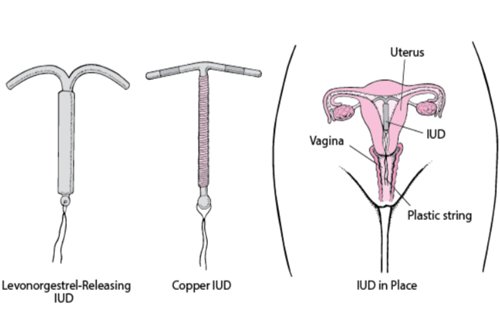Intrauterine device (IUD) In Nagpur

An Intrauterine Device (IUD) is a small, T-shaped contraceptive device that is inserted into the uterus to prevent pregnancy. IUDs are highly effective, reversible forms of birth control. They are long-acting and provide contraception for several years, depending on the type of IUD.
There are two main types of IUDs:
- Copper IUD:
The copper IUD is a non-hormonal contraceptive device.It is wrapped in a small amount of copper, which has a spermicidal effect and prevents fertilization.The copper IUD can be effective for up to 10 years, depending on the specific brand.
2. Hormonal IUD:
Hormonal IUDs release a small amount of progestin, a synthetic form of the hormone progesterone. Progestin thickens the cervical mucus, making it more difficult for sperm to reach the egg. It also affects the uterine lining, preventing the implantation of a fertilized egg. Hormonal IUDs can be effective for three to seven years, depending on the specific brand.
How an IUD is Inserted
The insertion of an IUD is a relatively simple medical procedure and is typically performed by a healthcare provider. Here are the general steps:
Preparation:
The healthcare provider will review the patient’s medical history, conduct a pelvic exam, and discuss the advantages and potential risks of IUD use.
Insertion:
- The IUD is inserted into the uterus through the cervix.
- The procedure is usually done in an office setting and takes only a few minutes.
- The healthcare provider may use a speculum to visualize the cervix and then insert the IUD through a thin tube.
Placement Check:
- After insertion, the healthcare provider checks to ensure that the IUD is properly positioned within the uterus.
- Strings attached to the IUD hang down into the vagina, allowing for easy confirmation of placement.
Advantages of IUDs
Highly Effective: IUDs are among the most effective forms of contraception.
Long-Acting: Depending on the type, IUDs can provide contraception for several years without requiring daily attention.
Reversible: Fertility typically returns quickly after the removal of an IUD.
Low Maintenance: Once inserted, IUDs require little ongoing maintenance or attention.
Hormonal and Non-Hormonal Options: There are both hormonal and non-hormonal IUDs, allowing individuals to choose based on their preferences and health considerations.
Convenient: IUDs do not require daily attention or user compliance, making them a convenient option for many individuals.
